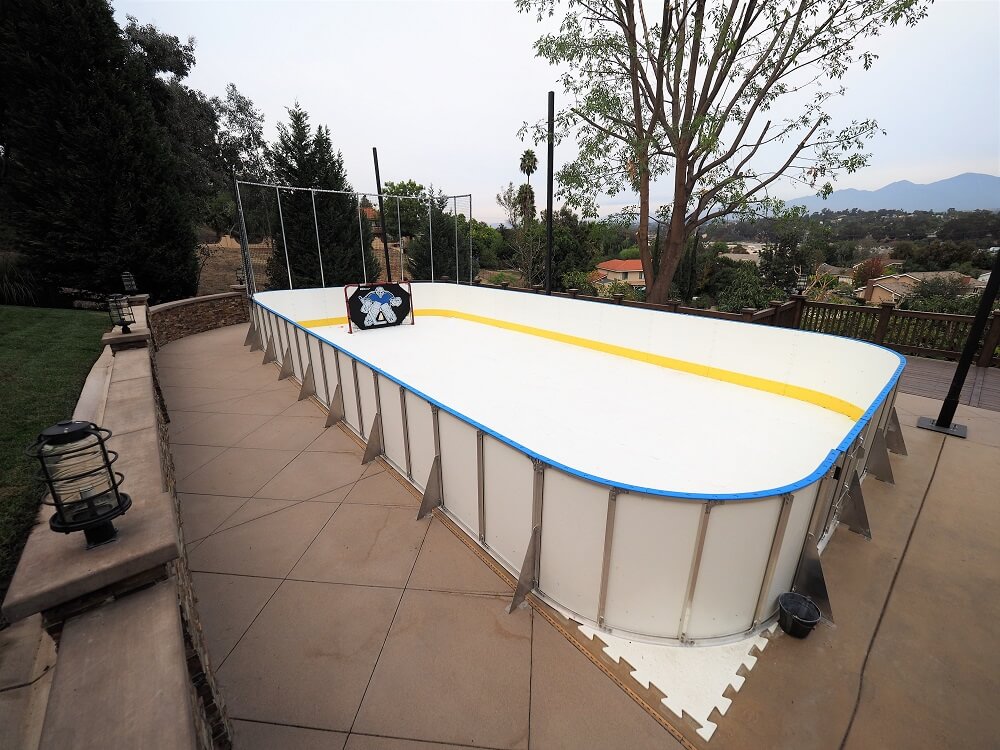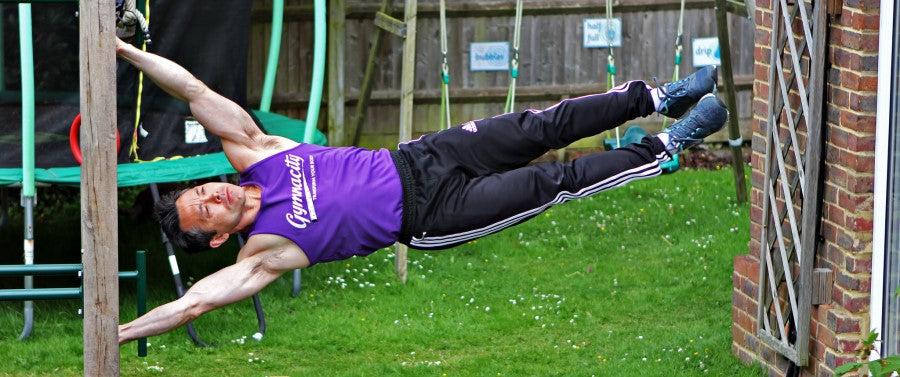
A Peek Into the Science Behind Synthetic Ice
Even before the great pandemic of 2020 synthetic ice was growing steadily in popularity due the fact that it can be easily installed in the home and turn a once boring area into a full-fledged ice skating rink. As the quality of this amazing flooring has improved over the years it has become more and more accepted as a reputable alternative to traditional ice.
Although the existence of artificial ice flooring was a bit rough in the beginning, modern-day advances in technology have allowed the creation of polymer plastics to come a long way. As with most of the other great discoveries throughout history, the development of synthetic ice flooring for the purpose of ice skating has been honed and sharpened into what it is today.
A Brief Background of Artificial Ice Flooring
Technically, artificial ice and synthetic ice are not the same things. Where artificial ice is more like the fake snow that you find during the holidays, synthetic ice plastics are more for the kind of flooring that is used in order to create an ice skating rink that will be usable in all weather conditions.
The idea to create a kind of flooring that would allow ice skating without the need for refrigerated buildings during the warmer months came into focus in the 1950s. A couple of well-known plastic manufacturers came together with ideas that would eventually turn into the synthetic ice that is available on the market today.
It took close to a decade for these ideas to come to reality, but after much hard work and preparation, in the 1960s developers manufactured their first batch of synthetic ice flooring.
Although it was a success in many ways, it was also a bit of a trainwreck.
The synthetic ice flooring that we know today is much different from the type that was around back then because it is equipped with self-lubricating technology. The first instances of plastic ice were a little rough because the only way that people could actually skate across the flooring is if there was a constant supply of lubricant applied during use.
The lubrication that was used for this flooring back in those days was a silicone-based substance that worked well as a gliding agent, but would have to be cleaned up and cleared away every hour or so because the silicone would leave a residue behind that caused the floor to get covered in a gummy residue that caused more harm than good for skaters.
The Advancement Of Polymer Plastics
Polymers are an integral part of life and are existent in most of the objects that surround us. In fact, our DNA molecules are a great example of how polymer chains work. On a molecular level, polymer chains are composed of large molecules that are chained together to form a material substance such as cotton, wool, or other substances.
Chemical corporations have put the knowledge and the power of science to good use in the creation of everyday products that people use around the world. From water bottles to automotive parts plastics play a gigantic role in the manufacture and production of goods around the globe.
When it comes to the science behind how synthetic ice is created, there is no exception to the minuscule properties that go into the creation of this marvelous entity. Synthetic hockey flooring is created with care on a molecular level.
Developers can actually develop customized polymer chains that make up the matter that synthetic ice is based on. Before the plastic even becomes a solid flooring, the creators can manipulate the cells of the creation and add various conditioners and lubricants into the formula that will act as desired when the flooring transforms from a formless base to a hardened floor panel.
Skating on Traditional Ice
One of the biggest reasons why ice skaters prefer to skate on traditional ice is that it is so easy to glide across and does not offer much resistance to the skater. There is no extra bit of energy that needs to be expelled in order to get from one end of the rink to the next. For the most part, once the skater gets going on the ice, it is an easy, almost effortless task to move across the rink and build up speed.
The reason why it is so easy to glide across the surface is that the bottoms of the ice skate blades are made of steel, and they create friction on the top of the ice. Whenever there is friction, heat soon follows. Since ice is really only frozen water it is not hard to figure out that the way that the blades glide so easily is that they heat up the ice and cause water to emerge in its place.

Not much water, just enough to create a slick line of lubricant so that the skates have nothing to slow them down as they glide. Just an easy, hassle-free maneuver that allows the skater to almost fly over the ice rink and move as they will.
The Science Explained
We mentioned earlier in this article that synthetic ice panels can be created on the molecular level. It is within this process that the concept of true ice comes into view. When the lubricants and conditioners that allow for self-lubrication of the flooring are activated by the ice skate blades digging into the surface of the flooring come to the top of the flooring as the skates come upon it, the entire science of water and ice becoming a lubricant is mimicked in the plastic.
Along the same lines as some of the fruits and vegetables that we eat are genetically engineered before they even become plants, is the science behind the creation of high-quality synthetic ice flooring. Although the ice panels are formed in a factory and not grown from the earth like a plant from a seed, the plastic that makes up the panels is engineered by developers to deliver specifically designed properties that can be activated under certain circumstances such as heat or touch.
Benefits of Synthetic Ice Flooring
Some of the best benefits of synthetic ice flooring over traditional ice rinks are the actual costs of not needing a refrigerated area to ice skate on when the heat comes. In order to maintain a fully functional ice rink during the hot summer months, it has to be housed in an area large enough to accommodate the size of the rink, along with the temperature of freezing water. Among lowered costs there are:
- Energy savings
- Building ice rinks anywhere
- Ice skating at home
- Build stronger muscles
- Easy to maintain
One of the lesser mentioned benefits of synthetic ice flooring is that it actually helps to build muscles and endurance. Although artificial ice flooring is very similar to traditional ice, there is still a slight drag in the way that the ice skates glide across the surface. The extra bit of resistance for the skater is not enough to actually hinder the skater, but it is enough to put enough extra pressure on the muscles to help build them and strengthen them.
Just that little bit of extra pushing on the rink can add up to a large number of gains in strength and stamina.
Conclusion
Although there may be a plethora of differing opinions on the validity of the value of synthetic ice, the facts are in plain sight when you look for them. Traditional ice costs more money and



